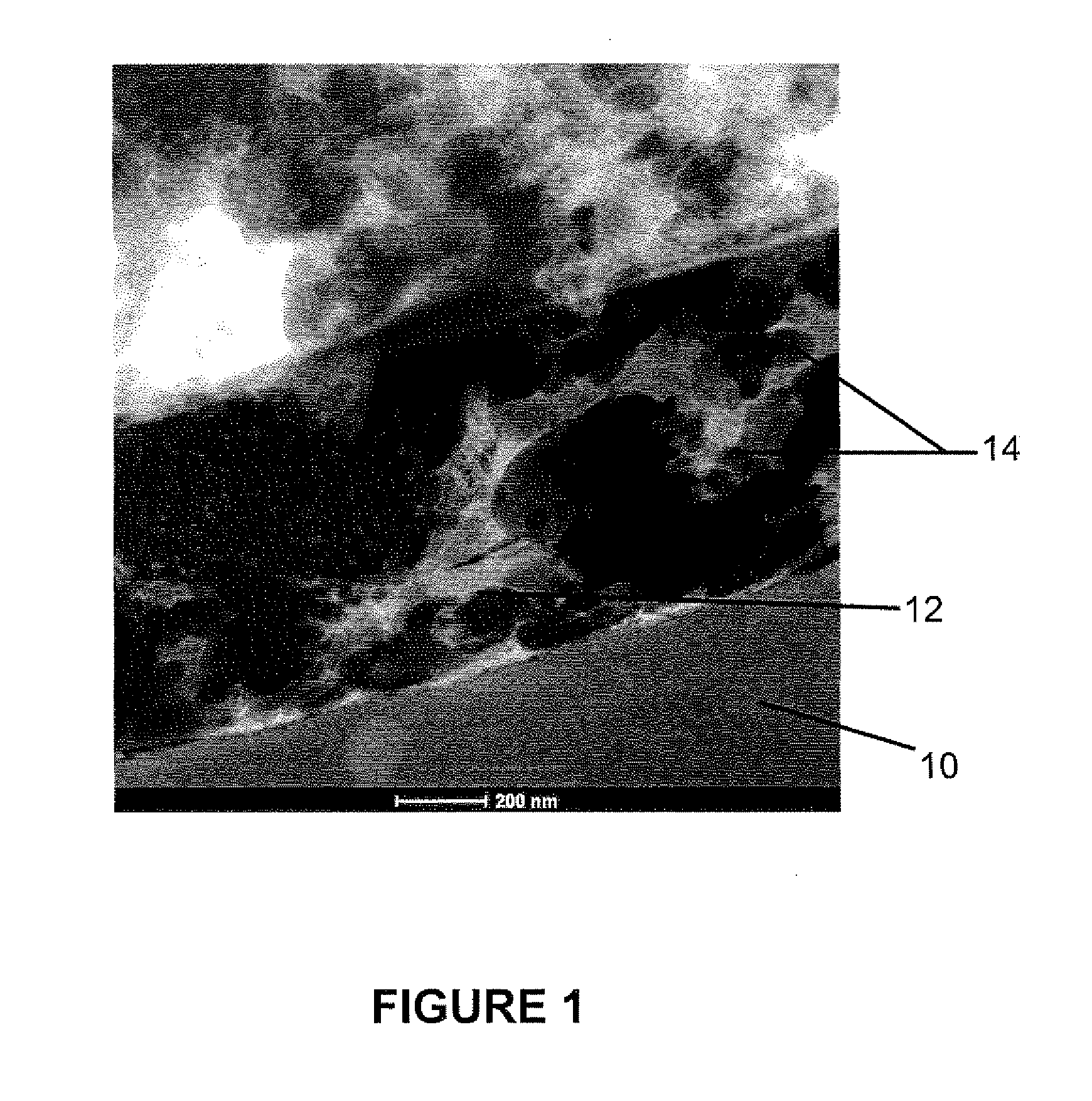Water-based adhesive for lamination of polymers to metal substrates
a technology of water-based adhesives and metal substrates, applied in the field of thin-layer water-based adhesives for bonding plastic films, can solve the problems of flammability and unenvironmental protection, difficult and time-consuming cleaning of non-water-based adhesives from equipment, and reduce the amount of plant space required, the effect of softening temperatur
- Summary
- Abstract
- Description
- Claims
- Application Information
AI Technical Summary
Benefits of technology
Problems solved by technology
Method used
Image
Examples
example 1
[0055]In a first series of adhesive compositions the functionalized polymer component used was emulsion A. The pH of emulsion A was adjusted to pH 9.0 using ammonium hydroxide, 28.8% NH3 solution. To this emulsion different levels of three cross linker components were added as described below in TABLE 1. In three examples a silicone surfactant wetting agent was also used. All samples were mixed at low speed until uniform. Example 1A is a comparative example in that it does not include a cross linker component and thus is not prepared in accordance with the present invention.
TABLE 1WettingEmul-CrossCrossCrossagentsionlinkerlinkerlinkersiliconeExampleAABCsurfactantTotal1A100.00.00.00.00.0100.0(Comparative)1B95.84.20.00.00.0100.01C92.08.00.00.00.0100.01D95.80.04.20.00.0100.01E92.00.08.00.00.0100.01F95.80.00.04.20.0100.01G92.00.00.08.00.0100.01H91.88.00.00.00.2100.01I91.80.08.00.00.2100.01J91.80.00.08.00.2100.0
example 2
[0056]In a second series of adhesive compositions the same functional polymer component as in example 1 was used and the pH of emulsion A was adjusted to pH 9.0 using ammonium hydroxide, 28.8% NH3 solution, and then it was used to prepare examples 2A-2D as described below in TABLE 2. All samples were mixed at low speed until uniform. In these examples either an ammonium zirconium carbonate solution, namely, cross linker D or cross linker A from example 1 was used as the cross linker component. In addition, the adhesive compositions included a phosphonate solution which was prepared by mixing 84.3 parts by weight deionized water, 5.7 parts by weigh of a 28% NH3 solution, and 10 parts by weight of 1-hydroxyethylidene-1,1,-diphosphonic acid, Dequest 2010 60% solution.
TABLE 2Component2A2B2C2DEmulsion A93.386.177.583.1Cross linker D3.37.613.60.0Cross linker A0.00.00.07.3Phosphonate solution3.46.38.99.6Total100.0100.0100.0100.0
example 3
[0057]In a third example a series of adhesive compositions were prepared as described below in TABLE 3. The adhesive compositions were prepared by adding the components in the order listed with low speed mixing until uniform. Each of the adhesive compositions were allowed to age 24 hours in a sealed bottle. Again the functionalized polymer component was emulsion A. All of the adhesive compositions were alkaline in the range of pH 8 or greater. All of the adhesive compositions included cross linker D. One also included cross linker A from example 1. Finally, three of the adhesive compositions also included the corrosion inhibitor V2O5 and cysteine.
TABLE 3Component3A3B3C3DDeionized Water33.029.024.931.5Cross linker D28.237.647.029.6Cross linker A0.00.00.03.5V2O50.60.60.60.0Emulsion A37.632.226.935.4Cysteine0.60.60.60.0Total100.0100.0100.0100.0
PUM
| Property | Measurement | Unit |
|---|---|---|
| thickness | aaaaa | aaaaa |
| temperature | aaaaa | aaaaa |
| temperature | aaaaa | aaaaa |
Abstract
Description
Claims
Application Information
 Login to View More
Login to View More - R&D
- Intellectual Property
- Life Sciences
- Materials
- Tech Scout
- Unparalleled Data Quality
- Higher Quality Content
- 60% Fewer Hallucinations
Browse by: Latest US Patents, China's latest patents, Technical Efficacy Thesaurus, Application Domain, Technology Topic, Popular Technical Reports.
© 2025 PatSnap. All rights reserved.Legal|Privacy policy|Modern Slavery Act Transparency Statement|Sitemap|About US| Contact US: help@patsnap.com


